First and the most beautiful is the birch tree, Betula, koivu in Finnish. There are many different subspecies. The one in the photos is Betula pendula, rauduskoivu, silver birch.
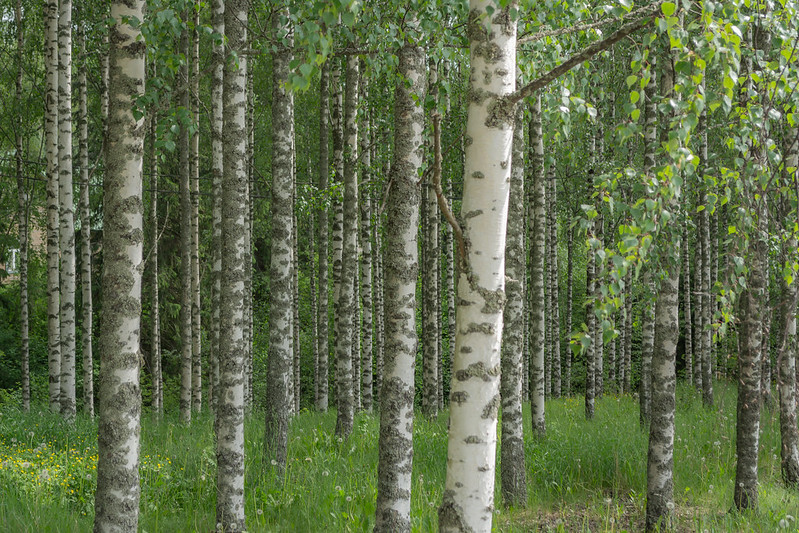
In the folklore, birch has been a good tree. Finnish legend tell that when the Redeemer (Christ) was walking in this world, birch tree helped him to find shade in burning sun. Redeemer blessed the birch and gave it its white bark that protects the tree against burning sun and freezing cold.
Birch branches have many important uses. They can be used as decorations, especially in mid-summer festival, they are used for cleaning the body in Finnish sauna. The leaves have been used to heal rheumatism. They are also used for tea. The birch sap is pleasantly sweet and have medicinal properties. Children used to collect sap in glass bottles in early spring when the sap start to flow. Sap can also be used for making alcohol or sirop. The bark has been used for making many different utensils, bags, rucksacks and even shoes and raincoats. Finnish scouts know that birch bark is the best help when lighting a bonfire. The wood is hard and material for light colored Scandianvian furniture, and excellent firewood because of its high caloric value.
The most famous Finnish painting where birch has an important role is Kristus ja Mataleena (Christ and Magdalena) by Albert Edelfelt.
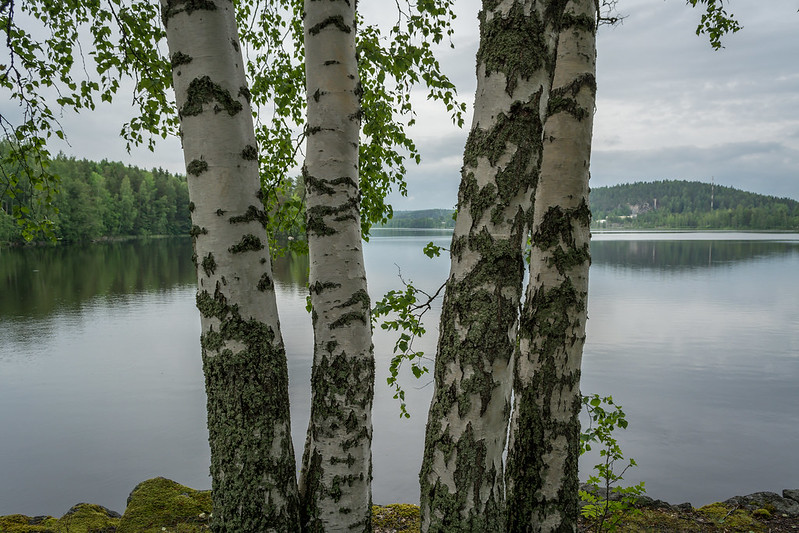
Marsh Labrador tea (Rhododendron tomentosum or Ledum palustre), suopursu in Finnish, finnmarkspors in Norwegian, is a low shrub that grow up to 50 to 70 cm high in the Northern parts of Europe, America and Asia. Its leaves are always green and it emits strong aromatic smell. All parts of the plant contain poisonous terpenes (finnish: terpiinit) that affect the central nervous system. The mere smell of the plant may cause headache to some people. In overdose it causes dizziness and nausea. In traditional medicine it has been used for healing rheumatism and skin diseases and for making tea or seasoning beer. It has also been used to repel harmful insects form domestic animals. The smell of Ledum palustre is very pleasant in my nose since it smells "home".
Suopursu kukkii... is a Finnish movie from 1947
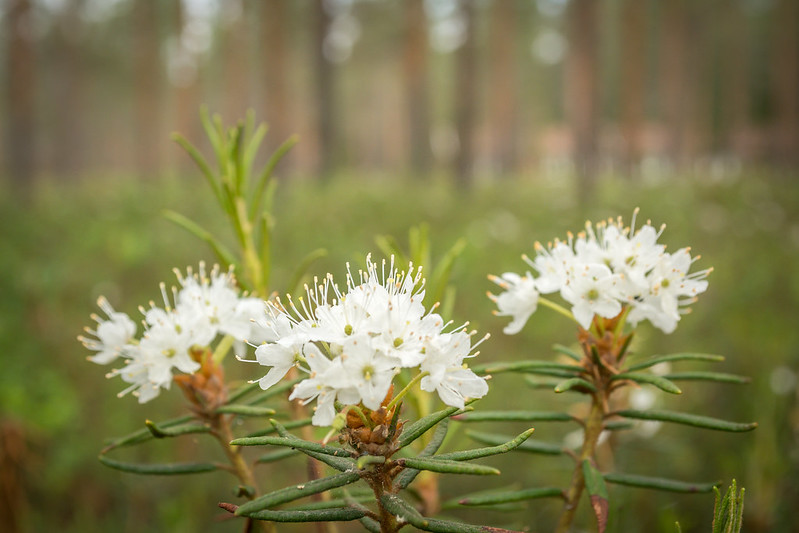
Scots pine (Pinus sylvestris), mänty in Finnish, Waldkiefer in German, is an evergreen coniferous tree native to northern Europe. In the South it is a high altitude tree growing in the mountains. Its importance for the Finnish economy and lifestyle cannot be overestimated. It has provided building material and energy for hundreds of years, in the golden age of sailing ships Finland was an important producer of tar (terva), made out of Scots pine, that was used for preserving wooden vessels against rot. The largest user of tar was the British Royal Navy. In the Finnish traditional medicine tar was a medicine for almost everything. There is a saying "if sauna, vodka and tar won't help, the disease is fatal". "Tarring and feathering" was used as a form of unofficial punishment or public humiliation in early modern period of Europe and its colonies. During the Little Ice Age in 18th century and also during the famine in 1860's the soft part of the tree bark was used as an extender of flour for making bread. Bark bread (pettuleipä in Finnish) was not easy to digest, but it had vitamin C.
Pine trees at Evijärvi, South Western Finland.
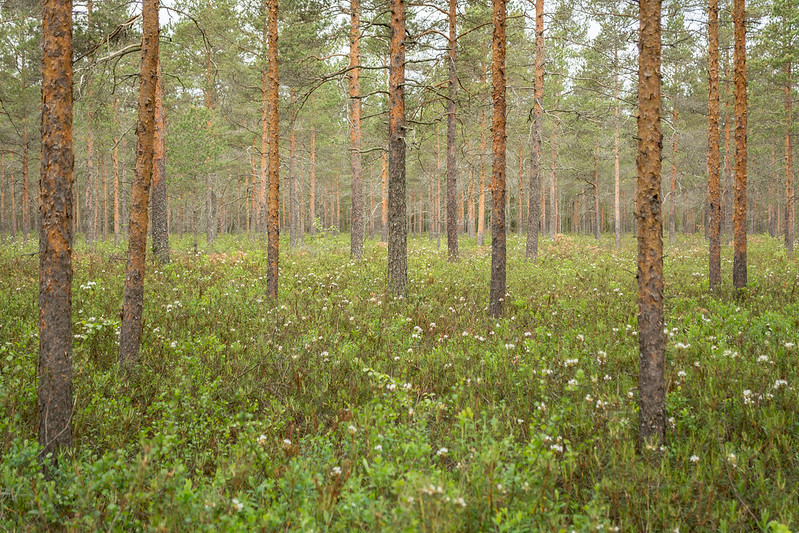
Sphagum (rahkasammal) is a common type of moss in Finland. It forms a pleasant carpet floor in the forest. Sphagum can store huge amounts of water in its cells. Sphagum may accumulate to layers of several meters forming peat, partially decayed organic matter, that provide a unique ecosystem for many plants and animals. Peat is been used for producing heat and electricity. Some estimates put the amount of peat in Finland alone to be twice the size of the North Sea oil reserves. The peatland ecosystem is the most efficient carbon sink on the planet. There are many other uses for Sphagum (or peat). It is widely used in agriculture and has many applications in ecological industry. It was also used in log houses to make the wall windproof.
Sphagum is growing well at Evijärvi.
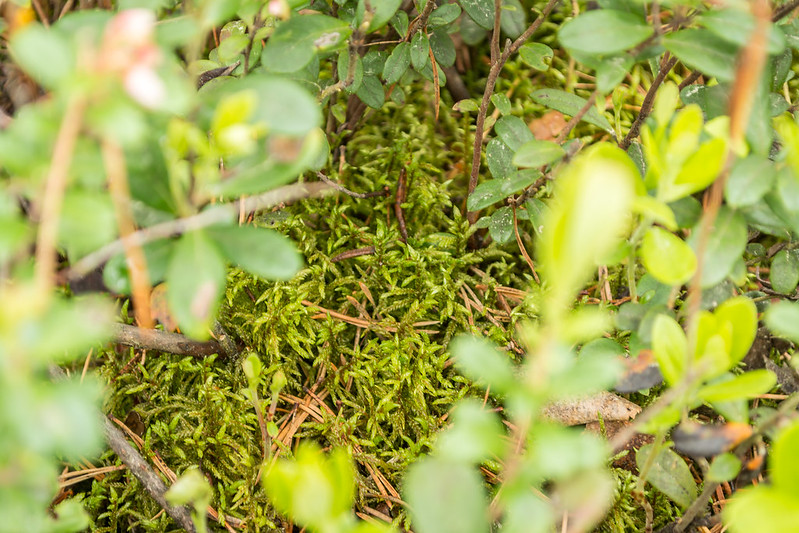
This is not an ordinary field. It is place where peat is extracted, a sort of peat mine, probably for producing energy.
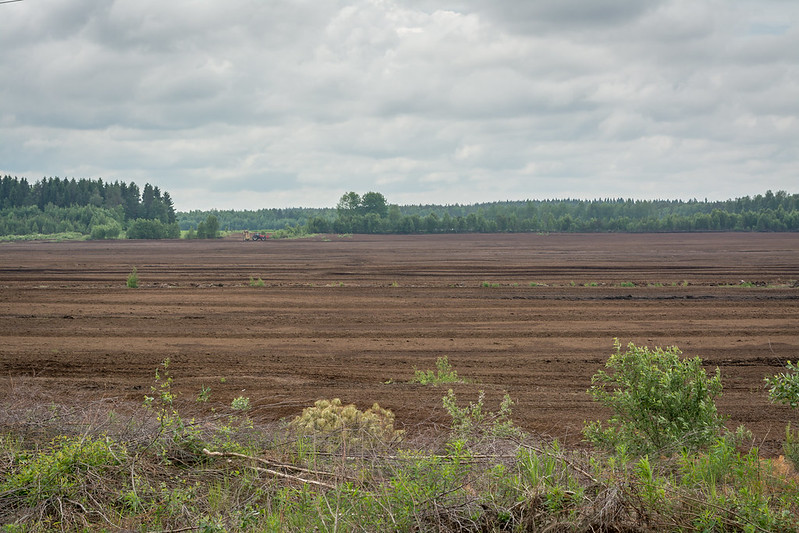
Arctic cloudberry (Rubus chamaemorus) grows in tundra and arctic areas of the Northern hemisphere. It produces an amber coloured fruit similar to raspberry. Ripe fruits are golden yellow and juicy. Taste is distinctively sweet and aromatic, texture is creamy. There is a great demand for this fruit in the restaurants and in the food and liquor industry and the price is high (10 euros/kilo). This plant can survive temperatures of minus 40 degrees celsius, but it is sensitive to salt and dry conditions. In Finland, the berries are eaten with heated "leipäjuusto", toasted fresh cheese. It has high content of vitamin C. Therefore it is appreciated by nordic seafarers and eskimos (inuit). In ancient Scandinavian herbal medicine it was used to cure urinary tract infections. The cloudberry appears also on the Finnish version of the 2 euro coin.
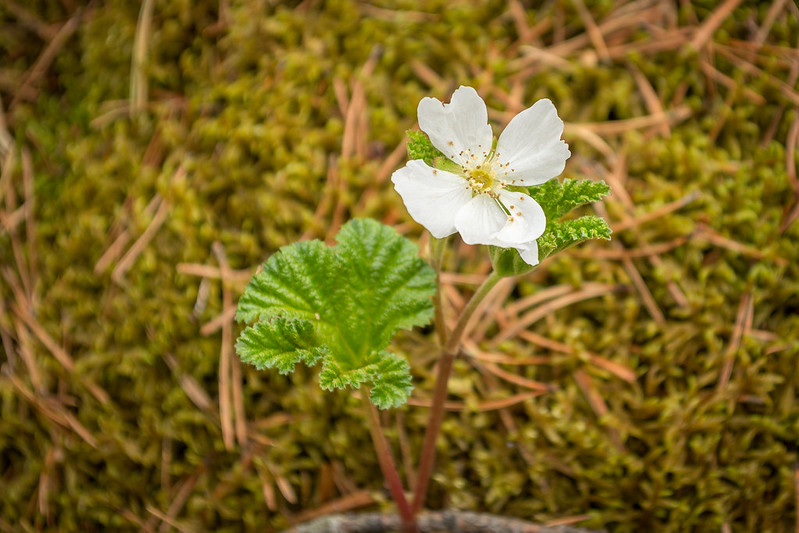
Another typical plant of the arctic areas is bog bilberry or northern bilberry (Vaccinium uliginosum), juolukka in Finnish. The berry is blue, reminiscent of blueberry, but the taste mild, almost dull, but it contains lots of vitamin C.
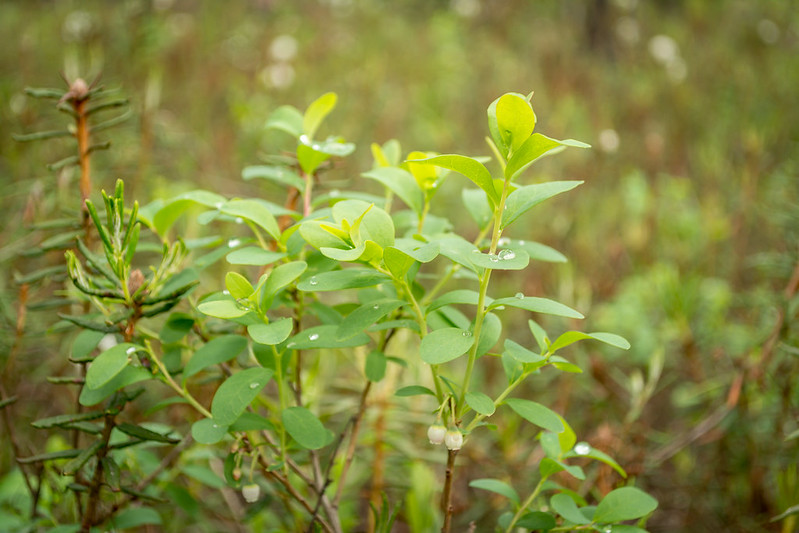
Calla (Calla palustris), suovehka in Finnish, Drachenwurz in German, 水芋, grows in bogs and ponds. It is poisonous when fresh, but after drying, grinding and cooking it can be used as food. It was used during famines, even though the taste is very bitter. Great botanist Carl Linnaeus was surprised that anybody would want to eat it even when starving.
Calla palustris at Hannulantie, Evijärvi.
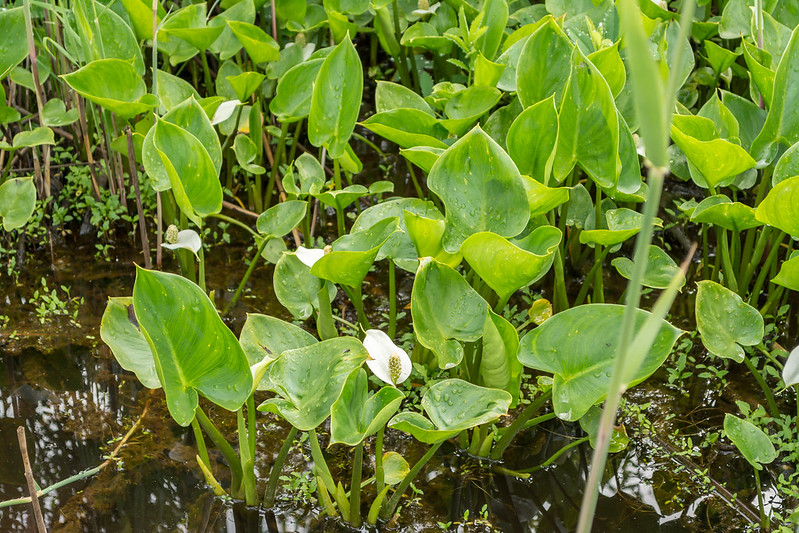
Arctic raspberry (Rubus arcticus), mesimarja in Finnish, Allackerbeere in German, is a species of slow-growing bramble belonging to the rose family. The fruits are very tasty and, among other uses, make jam and liqueur, or flavour tea. It contains 200 different aromatic substances. No wonder the taste is wonderful! In his book Flora Lapponica (1737) botanist Carl Linnaeus considered it a great delicacy. I cannot but agree.
Growing at Evijärvi, Finland.

This is the City flower of Sheffield, UK, woodland geranium (Geranium sylvaticum), metsäkurjenpolvi in Finnish, Wald-Storchschnabel in German. Just lovely.
Geranium sylvaticum growing at Evijärvi.
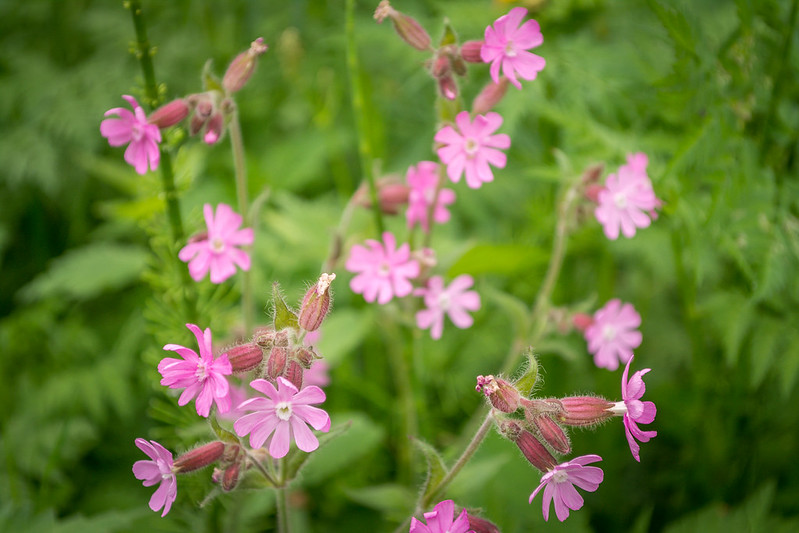
Iris pseudacorus (yellow flag, yellow iris, water flag), kurjenmiekka in Finnish, is a species in the genus Iris, of the family Iridaceae. It is native to most of Europe. It is popular ornamental plant, but can be an invasive species, that threthens other plants.
Yellow iris next to Jokisilta, Evijärvi.
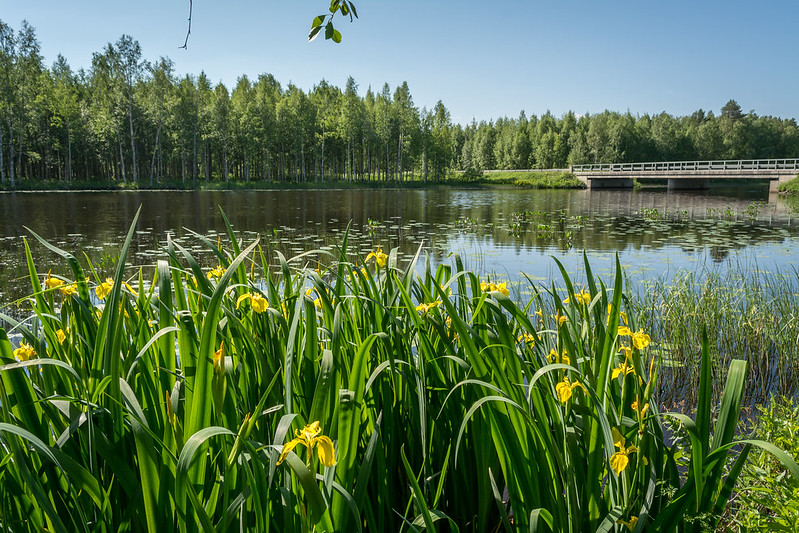
This plant does not grow in Central Europe, only in Finland and to the East of Finland until Japan and China. It is Nymphaea tetragona or Nymphaea fennica, suomenlumme or pikkulumme in Finnish. The flowers are white or red lotus flowers. I couldn't find the English name.
Here a group of Nymphaea fennica at Ina, Evijärvi.
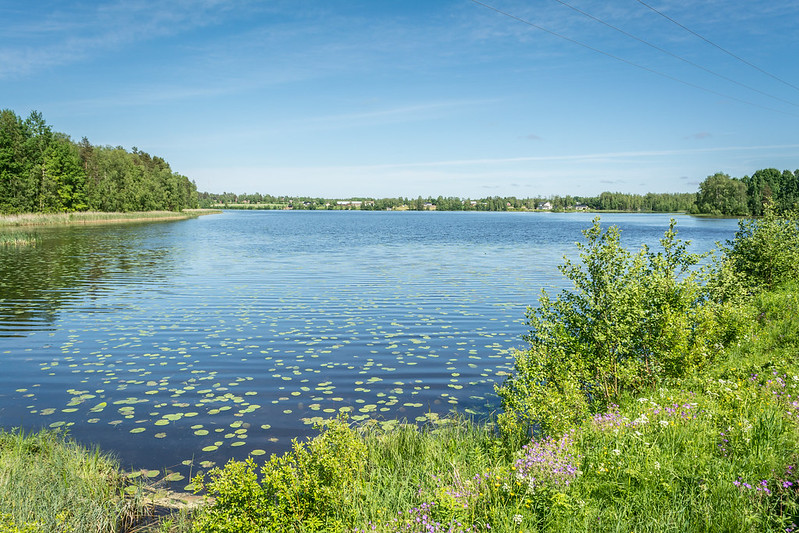
Lupinus polyphyllus (Large-leaved Lupine), lupiini in Finnish. In Finland it is classified as an invasive species since it threatens indigenous plants.
Beautiful lupines by the trunk road 68 Virrat-Pietarsaari that pass through Evijärvi.
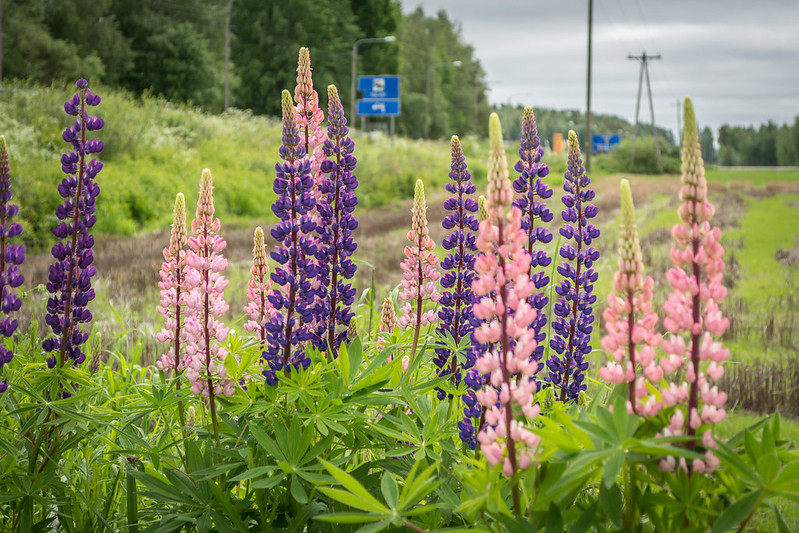
Equisetum palustre, the marsh horsetail, suokeorte in Finnish, Sumpf-Schachtelhalm in German, is a plant species belonging to the division of horsetails. It is poisonous to grass eating animals, but not to humans. It contains a vitamin B1-destroying
enzyme which can
lead to severe lack of coordination in horses, and the piperidine alkaloid palustrine,
which leads to lameness in cattle. This small plant remain usually unnoticed, but I think it is beautiful.
If I could decide, it would be the emblem of Evijärvi, because it is so common.
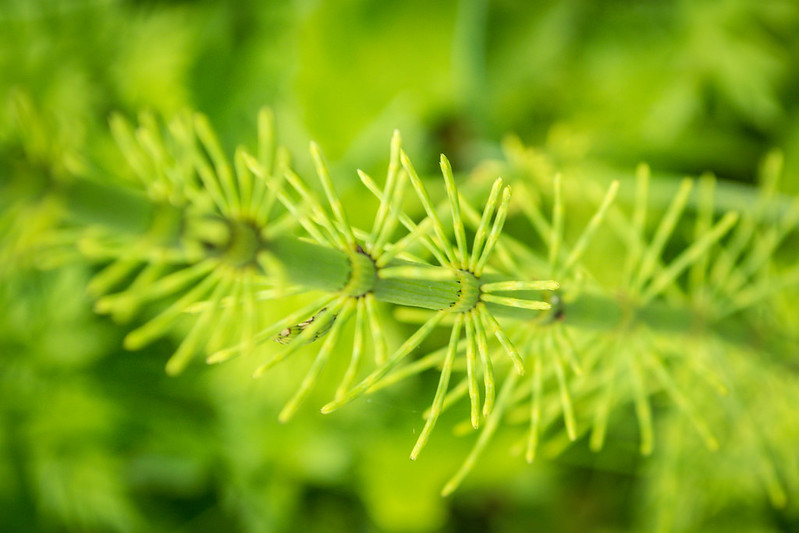
Catsfoot, Pussytoes (Antennaria dioica), kissankäpälä in Finnish, Katzenpfötchen in German, is a flowering plant in the family Asteraceae. They are cute, one of my favourite childhood plants.
These grow in Purmojärvi, close to Evijärvi.
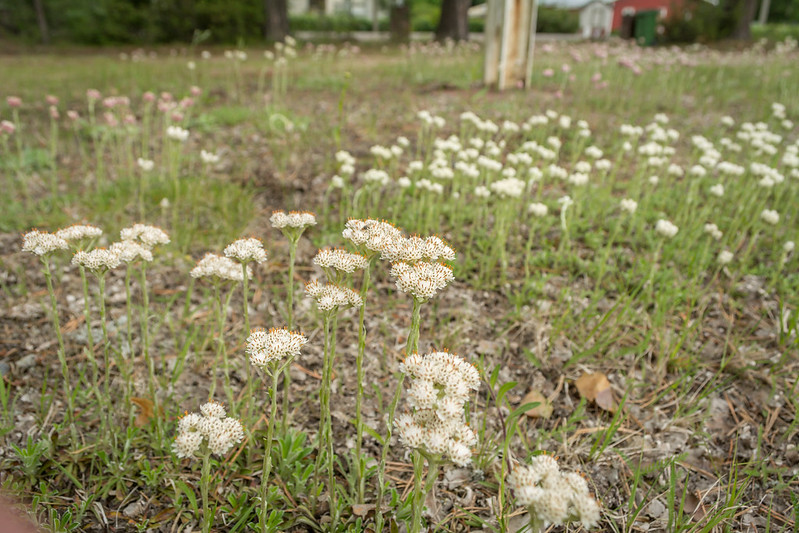
Arctium minus, commonly known as lesser burdock, pikkutakiainen in Finnish. See also my article on Greater burdock (Arctium lappa) target="_blank" .
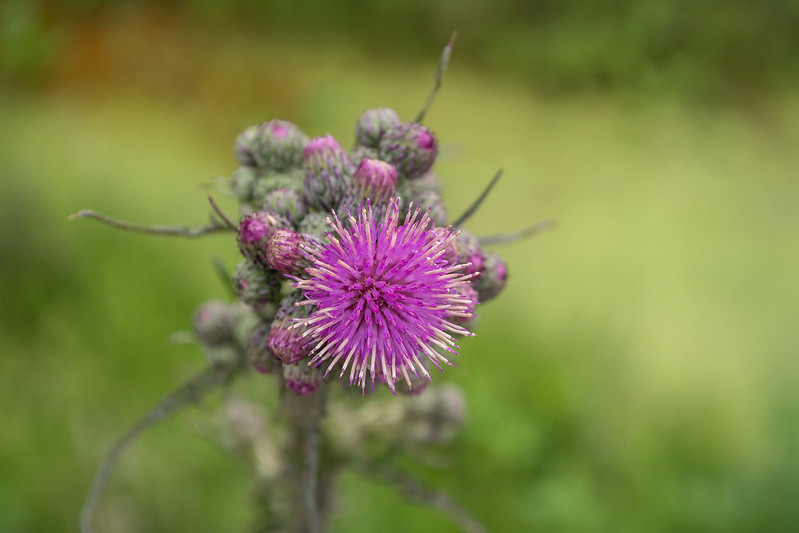
After this there will be a short article of the birds I saw during my trip, and then I can start writing about Taiwan again.
This comment has been removed by the author.
ReplyDelete